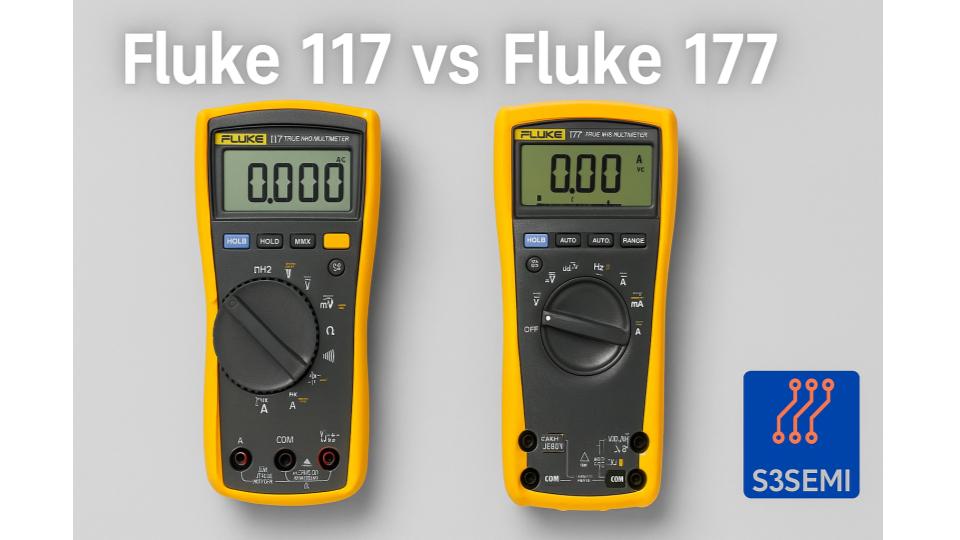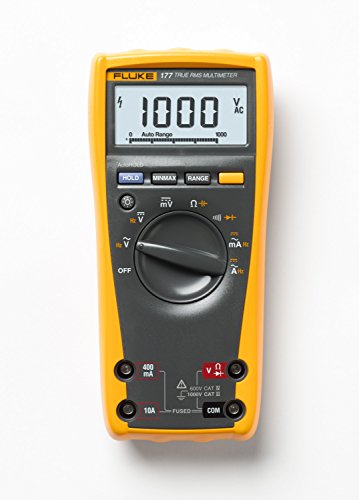Two of Fluke’s most popular models – the Fluke 117 and Fluke 177, are often compared by electricians, technicians, and hobbyists.
🏷️ Fluke Multimeter Deals ⭐⭐⭐⭐
While both are durable and accurate, they cater to slightly different needs. This guide will help you decide which one is right for you.
📊 Comparison Table
| Feature | Fluke 117 | Fluke 177 |
|---|---|---|
| Basic DC Accuracy | ±0.5% | ±0.09% |
| Display Count | 6,000 | 6,000 |
| Backlight | Yes | Yes |
| True RMS | Yes | Yes |
| Non-Contact Voltage Detection | Yes (VoltAlert™) | No |
| AutoVolt Selection | Yes | No |
| Temperature Measurement | No | Yes |
| CAT Safety Rating | CAT III 600V | CAT IV 600V / CAT III 1000V |
| Battery Life | ~400 hours | ~200 hours |
| Weight | ~550 g | ~420 g |
| 💳 Pricing | 💲 Check Price | 💲 Check Price |
📋 Overview of Both Models
Fluke 117
- Designed for electricians working in commercial, residential, and light industrial environments.
- Features VoltAlert™ non-contact voltage detection for quick checks.
- Compact design makes it easy to use with one hand.
Fluke 177
- Part of the Fluke 170 Series, aimed at professional troubleshooting in more demanding environments.
- Offers higher accuracy and a wider range of functions.
- Includes a large, backlit digital display with a 6,000-count resolution.
✅ Pros and Cons
Fluke 117 – Pros
- Non-contact voltage detection for quick safety checks.
- AutoVolt automatically detects AC or DC voltage.
- More compact and easier to carry.
- Lower cost.
Fluke 117 – Cons
- Slightly less accurate than the 177.
- No temperature measurement feature.
- Lower CAT safety rating.
Fluke 177 – Pros
- Higher accuracy (±0.09% DC).
- Measures temperature with included thermocouple.
- Higher safety rating (CAT IV 600V / CAT III 1000V).
- Excellent build quality for industrial use.
Fluke 177 – Cons
- No built-in non-contact voltage detection.
- Slightly more expensive.
- Shorter battery life compared to the 117.
🎯 Which One Should You Buy?
- Choose the Fluke 117 if you work mostly in residential or light commercial settings, want a built-in non-contact voltage detector, and prefer a more affordable, compact tool.
- Choose the Fluke 177 if you need the highest accuracy, industrial-level safety ratings, and temperature measurement capability.
Both models are excellent investments, so your decision will mainly depend on whether you value convenience and portability (117) or precision and expanded measurement capability (177).




